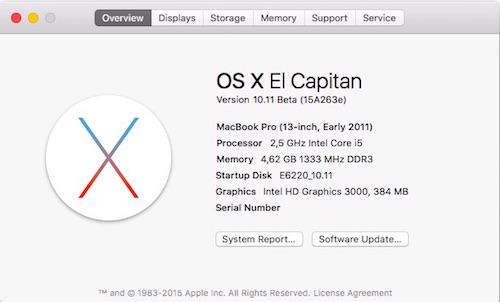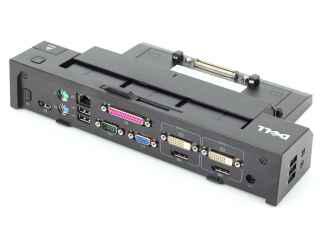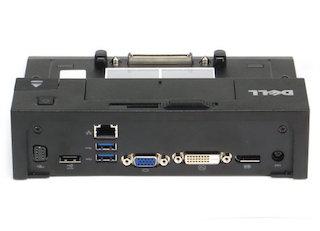-
Posts
10068 -
Joined
-
Last visited
-
Days Won
569
Content Type
Profiles
Articles, News and Tips
Forums
Everything posted by Hervé
-
Mail order?
-
I've not spent any time on the iMessage issue as I don't use the facility. I know it can work with Clover but I don't use Clover much either...
-
You have the Sandy Bridge i5-2520M CPU and can therefore re-use the entire bootpack I posted, SSDT table included. There is nothing to worry about SysInfo/SysProfiler showing 2.49GHz instead of 2.50GHz, it's what Chameleon detects and it's a pure cosmetic thing. You may fix that to 2.5GHz by entering a CPU speed of 2500 in the SMBIOS plist through Chameleon Wizard for instance. You may notice that HWMonitor always shows CPU speeds a couple of Hz slower than exactly rounded up frequencies too. That's perfectly normal. HW Monitor should definitely display turbo boost multiplers/speeds in the range x26/2.6GHz to x32/3.2GHz. Your AICPUPM log certainly shows P-States that fall into the whole expected range so you should see the same in HW Monitor... Regarding GeekBench results, bear in mind that this is a CPU test so results may depend on what you've got running at the time you run the test. Consider it mostly OS-independant but you may not get 6000+ all the time and it may be a little lower indeed. 4800-4900 seems much lower that what I would expect on your E6220. For your reference, I've just run a test under 10.11 DB7 and I got 6068 with cDock + HWMonitor + Display Menu apps running in the background and BT + Audio + Wireless + Battery + clock monitoring in the Finder's bar. You say your SSD is in non-TRIM mode; is it by choice or because it does not support it? Update to Yosemite 10.10.5 and you'll be able to use the trimforce Terminal command if your SSD supports the feature. Anyway, I would not worry about anything if I were you, your E6220 appears to run Yos just fine.
-
-> Patched AICPUPM in /S/L/E or -> NullCPUPM in /E/E or /S/L/E Whatever you choose, repair kext permissions and rebuild caches each time.
-

Mavericks 10.9.4 M4400/E6400/E6500 Tuning + Improvements
Hervé replied to iindigo's topic in The Archive
Re: CPU speed, make sure IDA is disabled in BIOS. Did you tune your AGPM kext? https://osxlatitude.com/index.php?/topic/7807-latitude-d-series-nvidia-gpu-performance-tuning-with-agpm/ -
You can either install VoodooHDA + HDA disabler kexts or replace the vanille AppleHDA in /S/L/E by the patched version from any available E6220/E6320/E6420/E6520 packs.
-
It's got a 64bit dual core Pentium CPU which should be Ok with all recent OS X versions. Then, it all depends on the graphics chip fitted to the laptop...
-

E6320 with HD3000 - Booting Yosemite with Dell Docking Station
Hervé replied to simonjohnharris's topic in The Archive
Correct! You can use apps such as 0xED hex editor to that effect. It's a nice app to use. There are others like HexFiend. Remember to do your search in Hex, not in Text. To complete your patch, proceed as follows: Copy the SNB framebuffer kext found in /S/L/E to your desktop Right click on the desktop SNB kext and select Show Package Contents Open up the binary file found Contents/MacOS subfolder with your Hex editor app Apply your above modifications Save the file Copy the modified kext back to /S/L/E Rebuild permissions + cache from Terminal: sudo chmod -Rf 755 /System/Library/Extensions sudo chown -Rf 0:0 /System/Library/Extensions sudo touch /System/Library/Extensions sudo kextcache -Boot -U / Reboot One word of caution though: make sure to apply your Hex replacement to the line of the correct section, i.e. ensure you do have the vanilla lines (listed in previous posts) right above and below the 02 05 ... line you'll modify. -
I'm surprised you were offered this update. I'm using the same MBP8,1 SMBIOS on my E6220 and I've never received that kind of stuff.
-
Ok, check your PM, we'll take this offline.
-
-
Up to DB7 now. 10.11DB7_patched_AppleIntelFramebufferAzul.kext.zip 10.11DB7_patched_AppleIntelHD5000Graphics.kext.zip
-
It's at the root of this very forum sub-section, right above this very thread! Look up the post with full packs too.
-
https://osxlatitude.com/index.php?/topic/6503-dell-latitude-e6320-with-i5-2520m-hd3000-and-1366x768-lcd-mavericks/ https://osxlatitude.com/index.php?/topic/8245-e6320-yosemite-a-couple-of-issues/ We need raw IOReg output + extracted raw DSDT, i.e. info extracted from OS X having booted without patched DSDT or extracted from Windows/Linux.
-
You can ignore the update and not install it if you have already done so. I've seen this in the past and, sometimes, the update offer can also disappear after you've installed it several times.
-

E6320 with HD3000 - Booting Yosemite with Dell Docking Station
Hervé replied to simonjohnharris's topic in The Archive
Patched kext works when I boot laptop (lid opened, haven't tried lid closed) with DVI or VGA connected to docking station, but not both. Which docking station or port replicator do you have? 'seems you have 2 external screens and, indeed, I could not get that to work properly with the patched kext (VGA + DVI). There's a E-Port Plus docking station I can also test at work. That has 2 x DVI + 2 x DP + 1 x VGA ports so it's much more than the simpler E-Port I was using that had 1 x DVI + 1 x VGA + 1 x DP at the back. I suspect you have the E-Port Plus and it may well be that the vanilla SNB frame buffer kexts supports both DVI off your dock. For HDMI, you would just need to patch the 0205 line I guess. All details provided previously and in the HD3000 thread I linked to in one of my previous posts above. -
I never use those, I tend to make dmg backup images of my OS X partitions from other partitions in case I need to re-install trough simple restore action.. That's always worked me. I've heard good things of CarbonCopy though. Google the matter, I'm sure you'll find lots of reports.
-
Sounds like you skip the OS X partition(s) during the cloning then...
-
Indeed, new logo, not a mod.
-
And up to DB7. Nice and easy that one, no particular fighting. Patched AppleHDA kext causes KP when placed in /S/L/E; however when copied to /L/E with vanilla AppleHDA deleted from /S/L/E, audio works fine.
-
So which part fixes things? ig-platform-id injection? Broadwell framebuffer patch?
-

Guide for enabling VGA, DP, DVI and HDMI in Intel HD3000 GPU
Hervé replied to EMlyDinEsH's topic in Graphics
It pays to experiment! Following a request from a forum member, I spent some time on this for the Dell Latitude E6220 video output when laptop is docked. Result is that we can now get all output ports supported: VGA, DVI and HDMI. Full details are here. In the case of the E6220 -and this should work for all other E6x20-, the following revised patch enables all video output ports: 01 02 04 00 10 07 00 00 10 07 00 00 // vanilla: nb of connectors -> "04" 05 03 00 00 02 00 00 00 30 00 00 00 // vanilla: laptop's own LCD display 02 05 00 00 00 08 00 00 05 00 00 00 // patched: HDMI display port (built-in port) 06 02 00 00 00 04 00 00 08 00 00 00 // patched: VGA display port (built-in + docking-station port) 04 06 00 00 00 04 00 00 07 00 00 00 // patched: DVI display port (docking-station port) For DisplayPort (DP) output, any of the following will do: 02 05 00 00 00 08 00 00 06 00 00 00 // patched: DP display port (docking station); tested with DP-HDMI adapter or 04 06 00 00 00 04 00 00 06 00 00 00 // vanilla: DP display port (docking-station); tested with DP-HDMI adapter or 03 04 00 00 00 04 00 00 06 00 00 00 // vanilla: DP display port (docking-station); tested with DP screen -
Further to new study, the patch for SNB framebuffer kext was further refined to support DVI output off docking stations such as port replicator E-Port K07A002 (tested Ok) or E-Port Plus K09A001 (tested Ok). Full details available here. NB: The USB3.0 ports of those docking stations/port replicators work OOB but only at USB2.0 speed on the E6220 since this laptop has no built-in XHCI controller.
-

E6320 with HD3000 - Booting Yosemite with Dell Docking Station
Hervé replied to simonjohnharris's topic in The Archive
My mistake, I think I was too quick uploading the file and posted the vanilla kext, not the newly patched one! I've modified the post; try again. PS: let's look at the camera matter in a separate thread but read my existing E6320 guide. It mentions it. -

E6320 with HD3000 - Booting Yosemite with Dell Docking Station
Hervé replied to simonjohnharris's topic in The Archive
Ok, sorted, it's the last choice ("04 06 ..."). With the following revised SNB framebuffer patch, the E6220 now has DVI and VGA output supported out of the Port Replicator in addition to built-in VGA + HDMI outputs: 01 02 04 00 10 07 00 00 10 07 00 00 // vanilla: nb of connectors -> "04" 05 03 00 00 02 00 00 00 30 00 00 00 // vanilla: laptop's own LCD display 02 05 00 00 00 08 00 00 06 00 00 00 // patched: HDMI display port (built-in port) 06 02 00 00 00 04 00 00 09 00 00 00 // patched: VGA display port (built-in + docking-station port) 04 06 00 00 00 04 00 00 09 00 00 00 // vanilla: DVI display port (docking-station port) Tested Ok with Mavericks 10.9.5, Yosemite 10.10.5 and El Capitan DB6. This should work with all E6x20 models. 2 points to note: laptop's built-in VGA port is disabled when computer is docked to my port replicator; so it's either-or, as expected. I could not get display to work properly with 2 external displays, one on DVI, one on VGA; all 3 displays were detected properly but built-in LCD + VGA outputs remained dark, only DVI screen showed desktop. Might work with some additional patch, I don't know at this stage. Could be a conflict of port numbers as I think I used #9 on both. So, for the moment, it's one or the other on the port replicator. System may behave differently with a different docking station such as model E-Port Plus K09A001 for instance. Will try and test if/when I have time. Here is the revised 10.10.5 patched SNB framebuffer kext: 10.10.5_newly_patched_AppleIntelSNBGraphicsFB.kext.zip






